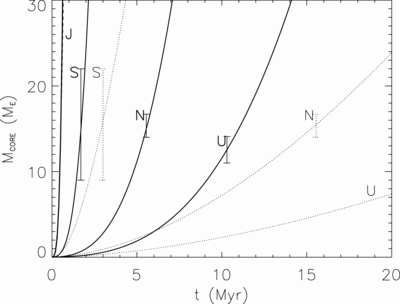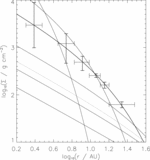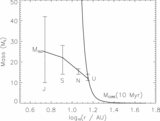Image Details

Caption: Fig. 3.
Core masses as a function of time. The masses of four planetary cores, at 5.45, 8.18, 11.5, and 14.2 AU (left to right), are shown, representing the cores of the planets Jupiter, Saturn, Neptune, and Uranus, respectively. Vertical bars represent the estimated core masses of Saturn, Neptune, and Uranus; their placements at various times are only to guide the eye. The masses of the cores of Jupiter, Saturn, Neptune, and Uranus reach their present‐day values within 0.6, 2, 6, and 10 Myr, respectively, assuming that the surface densities in each location are maintained for as long as they take to form (solid lines). If the nebula is allowed to viscously spread, formation times are greatly prolonged as the lower gas densities fail to damp the eccentricities of planetesimals (dotted lines).
Copyright and Terms & Conditions
© 2007. The American Astronomical Society. All rights reserved. Printed in U.S.A.






